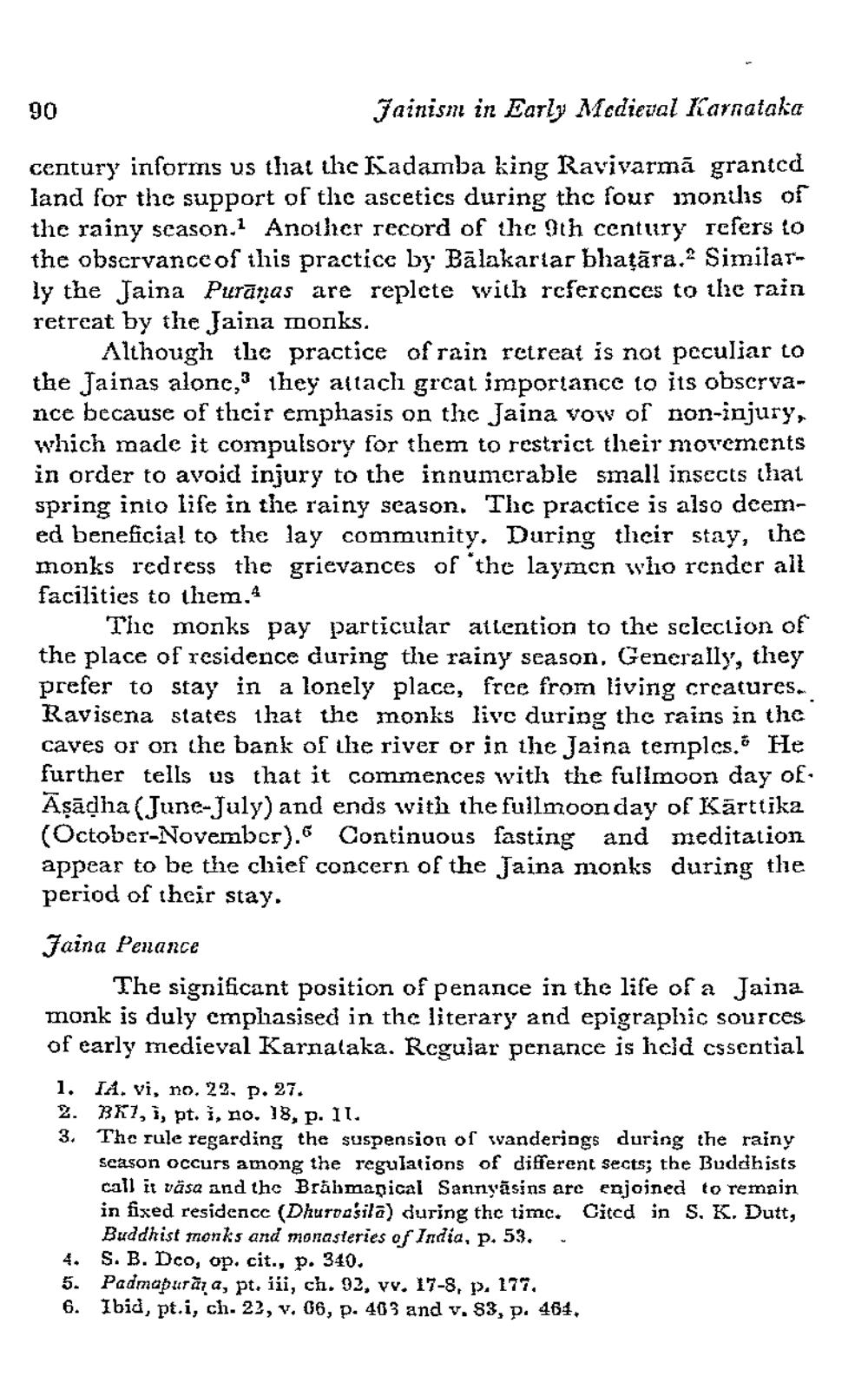________________
90
Jainism in Early Medieval Karnataka
century informs us that the Kadamba king Ravivarmā granted land for the support of the ascetics during thc four inondis of the rainy season. Another record of the 9th century refers to the obscrvanccof this practice by Bālakartar bhatāra.Similarly the Jaina Purānas are replete with references to the rain retreat by the Jaina monks.
Although the practice of rain retreat is not peculiar to the Jainas alonc,3 they attach grcat importance to its obscrvance because of their emphasis on the Jajna vow of non-injury, which made it compulsory for them to restrict their movements in order to avoid injury to the innumerable small insects that spring into life in the rainy season. The practice is also deemed beneficial to the lay community. During their stay, the monks redress the grievances of the laymon wiio render all facilities to them.4
The monks pay particular attention to the sclection of the place of residence during the rainy season, Gencrally, they prefer to stay in a lonely place, free from living creatures. Ravisena states that the monks live during the rains in the caves or on the bank of the river or in the Jaina temples. He further tells us that it commences with the fullmoon day of Āşādha (June-July) and ends with the fullmoon day of Kārttika (October-November). Continuous fasting and meditation appear to be the chief concern of the Jaina monks during the period of their stay. Jaina Penance
The significant position of penance in the life of a Jaina monk is duly emphasised in the literary and epigraphic sources of early medieval Karnataka. Rcgular penance is held cssential 1. IA. vi, no. 22, p. 27. 2. BK1, i, pt. 1, no. 18, p. II.
The rule regarding the suspension of wanderings during the rainy season occurs among the regulations of different sects; the Buddhists call it väsa and the Bräbmapical Sannyasins are enjoined to remain in fixed residencc (Dhuroosila) during the timc. Cited in S. K. Dutt,
Buddhist monks and monasteries of India, p. 53. 4. S. B. Dco, op. cit., p. 340. 5. Padmapuria, pt. iii, ch. 92, vv. 17-8, p. 177. 6. Ibid, pt.i, ch. 22, v. 66, p. 403 and v. 83, p. 464.




